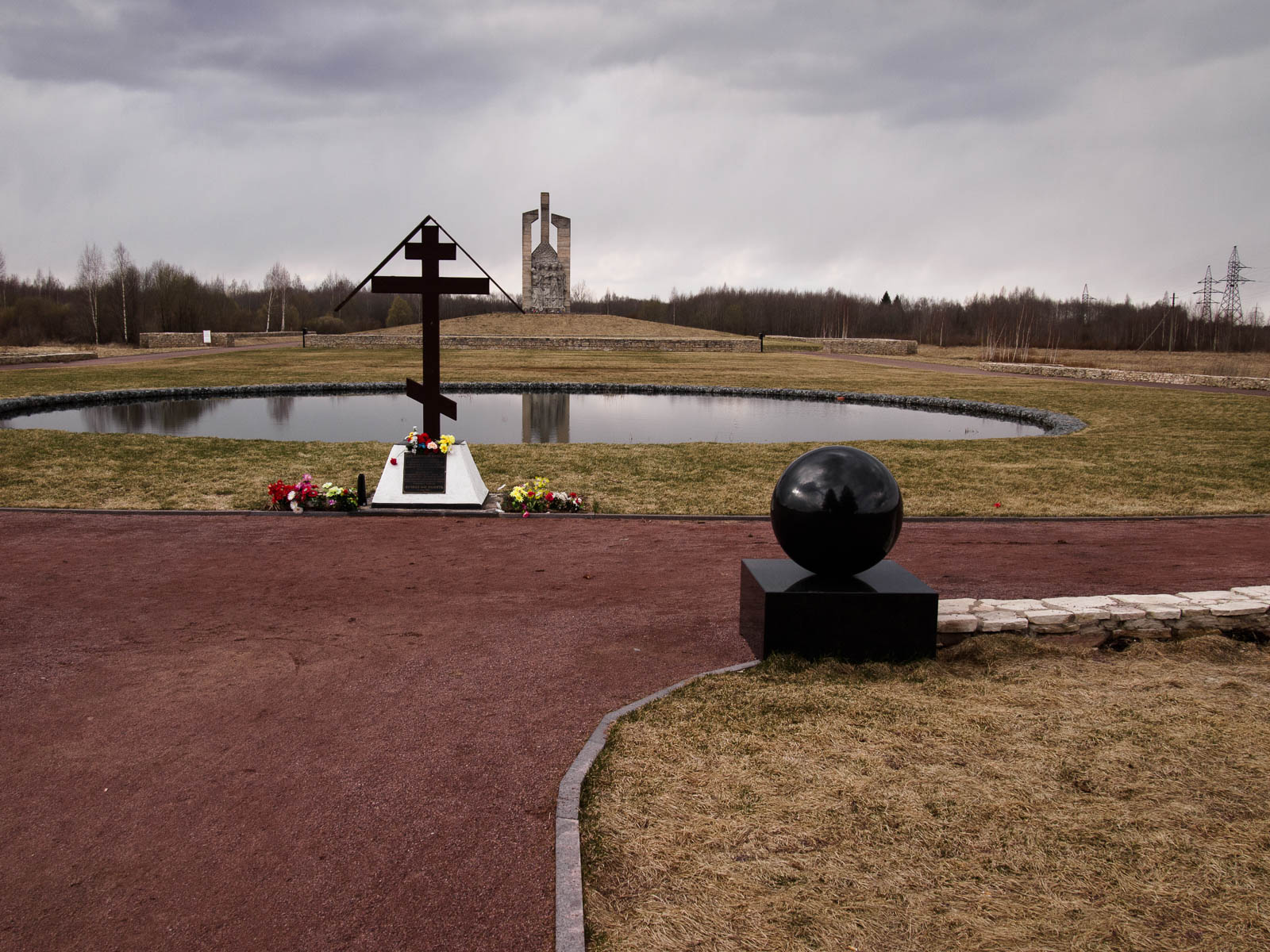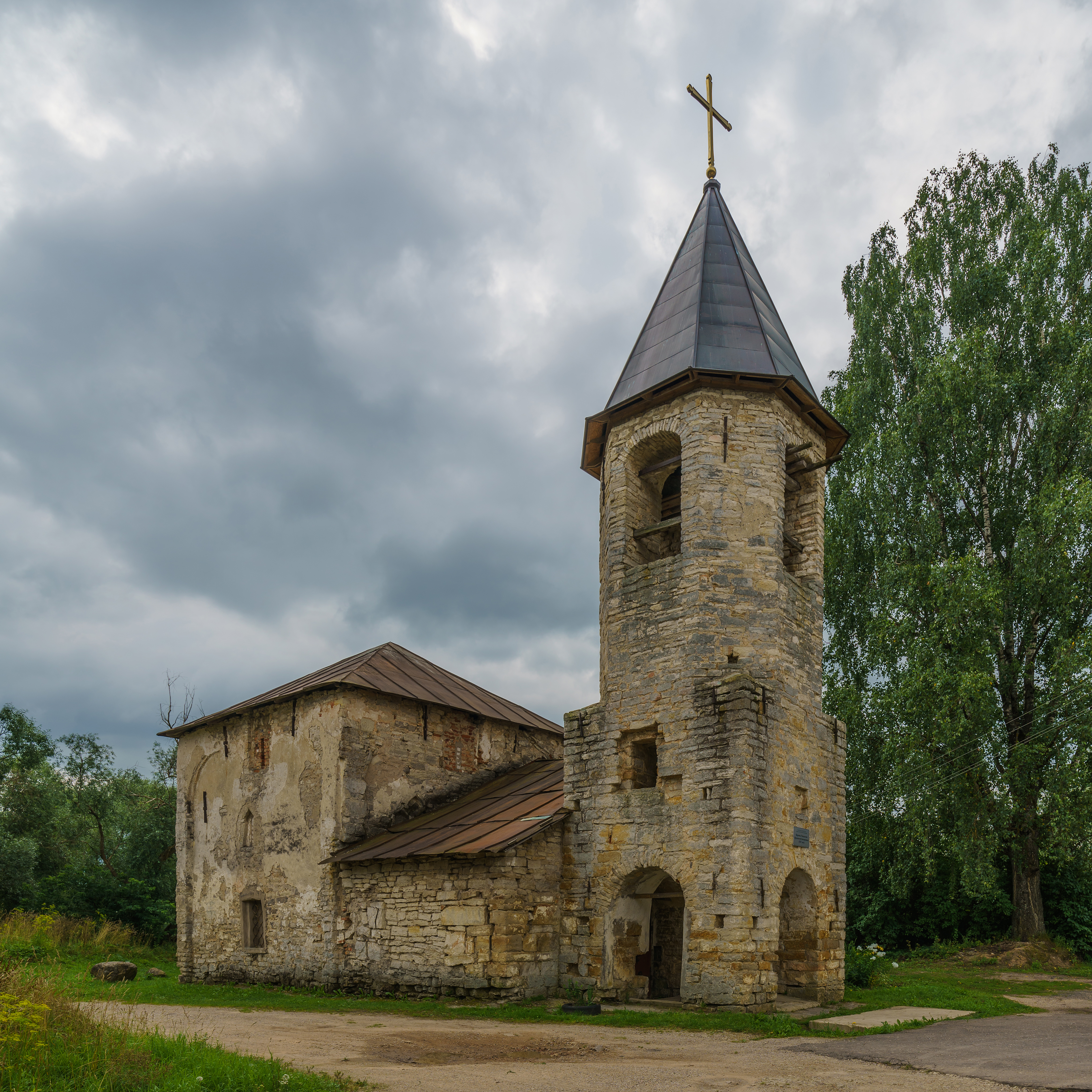|
Porkhov
Porkhov (russian: По́рхов) is a town and the administrative center of Porkhovsky District in Pskov Oblast, Russia, located on the Shelon River, east of Pskov, the administrative center of the oblast. Population: History The fortress of Porkhov is believed to have been founded in 1239 by Alexander Nevsky. The timber fortress was sacked by Algirdas (Olgierd) in 1356 and fell in flames in 1387. The Novgorod Republic immediately rebuilt its fortifications in limestone downstream. In 1428, Grand Duke of Lithuania Vytautas destroyed the western wall by artillery fire and entered Porkhov. Two years later, the Novgorodians augmented the fortress and rebuilt its walls. After the fall of Novgorod to the Muscovites in 1478, the fortress lost its military importance. Porkhov was the second most important town of Shelon Pyatina, after Russa. It was not, however, a significant economical center—there were only seventy-six homesteads there in the 15th century and almost al ... [...More Info...] [...Related Items...] OR: [Wikipedia] [Google] [Baidu] |
Porkhovsky District
Porkhovsky District (russian: По́рховский райо́н) is an administrativeLaw #833-oz and municipalLaw #420-oz district (raion), one of the twenty-four in Pskov Oblast, Russia. It is located in the central and northeastern parts of the oblast and borders with Strugo-Krasnensky District in the north, Soletsky District of Novgorod Oblast in the northeast, Dnovsky District in the east, Dedovichsky District in the southeast, Novorzhevsky District in the south, Ostrovsky District in the southwest, and with Pskovsky District in the west. The area of the district is . Its administrative center is the town of Porkhov. Population: 28,470 ( 2002 Census); The population of Porkhov accounts for 49.2% of the district's total population. Geography The district is located on the divide between the basins of the Narva and Neva Rivers. The southern part of the district belongs to the basin of the Velikaya River; itself in the basin of the Narva. The Cheryokha River, one of the ... [...More Info...] [...Related Items...] OR: [Wikipedia] [Google] [Baidu] |
Shelon River
The Shelon (russian: Шелонь) is a river in the northwest part of European Russia, in Dedovichsky, Porkhovsky, and Dnovsky Districts of Pskov Oblast and Soletsky and Shimsky Districts of Novgorod Oblast. The Shelon is one of the principal tributaries of Lake Ilmen. It has a length of and drains a basin of . The towns of Porkhov and Soltsy, as well as urban-type settlements of Dedovichi and Shimsk, are located on the banks of the Shelon. The principal tributaries of the Shelon are the Sudoma (left), the Belka (right), the Polonka (right), the Uza (left), the Udokha (left), the Sitnya (left), and the Mshaga (left). The Shelon has its source in the swamps at the east of Pskov Oblast, close to the border with Novgorod Oblast. It flows northeast, then turns around and flows west. Around the urban-type settlement of Dedovichi the Shelon turns northwest. It further enters Porkhovsky District, and behind Porkhov turns north and then northeast. The Shelon crosses a sho ... [...More Info...] [...Related Items...] OR: [Wikipedia] [Google] [Baidu] |
Porkhovsky Uyezd
Porkhovsky Uyezd (''По́рховский уе́зд'') was one of the subdivisions of the Pskov Governorate of the Russian Empire. It was situated in the northern part of the governorate. Its administrative centre was Porkhov. Demographics At the time of the Russian Empire Census of 1897, Porkhovsky Uyezd had a population of 175,853. Of these, 97.8% spoke Russian, 0.7% Belarusian, 0.5% Estonian, 0.3% Latvian, 0.3% Yiddish, 0.2% German, 0.1% Polish Polish may refer to: * Anything from or related to Poland, a country in Europe * Polish language * Poles, people from Poland or of Polish descent * Polish chicken *Polish brothers (Mark Polish and Michael Polish, born 1970), American twin screenwr ... and 0.1% Finnish as their native language. Демоскоп Weekly - Приложение. Справочник статистических пока� ... [...More Info...] [...Related Items...] OR: [Wikipedia] [Google] [Baidu] |
Pskov Oblast
Pskov Oblast (russian: Пско́вская о́бласть, ') is a federal subject of Russia (an oblast), located in the west of the country. Its administrative center is the city of Pskov. As of the 2010 Census, its population was 673,423. Geography Pskov Oblast is the westernmost federal subject of contiguous Russia ( Kaliningrad Oblast, while located further to the west, is an exclave).1september.ru. Д. В. Заяц (D. V. Zayats).Псковская область (''Pskov Oblast''). It borders with Leningrad Oblast in the north, Novgorod Oblast in the east, Tver and Smolensk Oblasts in the southeast, Vitebsk Oblast of Belarus in the south, and with the counties of Latvia ( Alūksne Municipality, Balvi Municipality, and Ludza Municipality) and Estonia ( Võru County) in the west. In the northwest, Pskov Oblast is limited by Lake Peipus, which makes up most of the state border with Estonia. The oblast is located in the Baltic Sea drainage basin, mostly in ... [...More Info...] [...Related Items...] OR: [Wikipedia] [Google] [Baidu] |
Yad Vashem
Yad Vashem ( he, יָד וַשֵׁם; literally, "a memorial and a name") is Israel's official memorial to the victims of the Holocaust. It is dedicated to preserving the memory of the Jews who were murdered; honoring Jews who fought against their Nazi oppressors and Gentiles who selflessly aided Jews in need; and researching the phenomenon of the Holocaust in particular and genocide in general, with the aim of avoiding such events in the future. Established in 1953, Yad Vashem is located on the western slope of Mount Herzl, also known as the Mount of Remembrance, a height in western Jerusalem, above sea level and adjacent to the Jerusalem Forest. The memorial consists of a complex containing two types of facilities: some dedicated to the scientific study of the Holocaust and genocide in general, and memorials and museums catering to the needs of the larger public. Among the former there are a research institute with archives, a library, a publishing house, and an educational ... [...More Info...] [...Related Items...] OR: [Wikipedia] [Google] [Baidu] |
Subdivisions Of Russia
Russia is divided into several types and levels of subdivisions. Federal subjects Since 30 September 2022, the Russian Federation has consisted of eighty-nine federal subjects that are constituent members of the Federation.Constitution, Article 65 However, six of these federal subjects—the Republic of Crimea, the Donetsk People's Republic, the Kherson Oblast, the Lugansk People's Republic, the federal city of Sevastopol and the Zaporozhye Oblast—are internationally recognized as part of Ukraine. All federal subjects are of equal federal rights in the sense that they have equal representation—two delegates each—in the Federation Council (upper house of the Federal Assembly). They do, however, differ in the degree of autonomy they enjoy. De jure, there are 6 types of federal subjects—24 republics, 9 krais, 48 oblasts, 3 federal cities, 1 autonomous oblast, and 4 autonomous okrugs. Autonomous okrugs are the only ones ... [...More Info...] [...Related Items...] OR: [Wikipedia] [Google] [Baidu] |
Saint Petersburg
Saint Petersburg ( rus, links=no, Санкт-Петербург, a=Ru-Sankt Peterburg Leningrad Petrograd Piter.ogg, r=Sankt-Peterburg, p=ˈsankt pʲɪtʲɪrˈburk), formerly known as Petrograd (1914–1924) and later Leningrad (1924–1991), is the List of cities and towns in Russia by population, second-largest city in Russia. It is situated on the Neva River, at the head of the Gulf of Finland on the Baltic Sea, with a population of roughly 5.4 million residents. Saint Petersburg is the List of European cities by population within city limits, fourth-most populous city in Europe after Istanbul, Moscow and London, the List of cities and towns around the Baltic Sea, most populous city on the Baltic Sea, and the world's List of northernmost items#Cities and settlements, northernmost city of more than 1 million residents. As Russia's Imperial capital, and a Ports of the Baltic Sea, historically strategic port, it is governed as a Federal cities of Russia, federal city. ... [...More Info...] [...Related Items...] OR: [Wikipedia] [Google] [Baidu] |
Cities And Towns In Pskov Oblast
A city is a human settlement of notable size.Goodall, B. (1987) ''The Penguin Dictionary of Human Geography''. London: Penguin.Kuper, A. and Kuper, J., eds (1996) ''The Social Science Encyclopedia''. 2nd edition. London: Routledge. It can be defined as a permanent and densely settled place with administratively defined boundaries whose members work primarily on non-agricultural tasks. Cities generally have extensive systems for housing, transportation, sanitation, utilities, land use, production of goods, and communication. Their density facilitates interaction between people, government organisations and businesses, sometimes benefiting different parties in the process, such as improving efficiency of goods and service distribution. Historically, city-dwellers have been a small proportion of humanity overall, but following two centuries of unprecedented and rapid urbanization, more than half of the world population now lives in cities, which has had profound consequences for g ... [...More Info...] [...Related Items...] OR: [Wikipedia] [Google] [Baidu] |
Internment
Internment is the imprisonment of people, commonly in large groups, without charges or intent to file charges. The term is especially used for the confinement "of enemy citizens in wartime or of terrorism suspects". Thus, while it can simply mean imprisonment, it tends to refer to preventive confinement rather than confinement ''after'' having been convicted of some crime. Use of these terms is subject to debate and political sensitivities. The word ''internment'' is also occasionally used to describe a neutral country's practice of detaining belligerent armed forces and equipment on its territory during times of war, under the Hague Convention of 1907. Interned persons may be held in prisons or in facilities known as internment camps (also known as concentration camps). The term ''concentration camp'' originates from the Spanish–Cuban Ten Years' War when Spanish forces detained Cuban civilians in camps in order to more easily combat guerrilla forces. Over the followi ... [...More Info...] [...Related Items...] OR: [Wikipedia] [Google] [Baidu] |
Nazi Germany
Nazi Germany (lit. "National Socialist State"), ' (lit. "Nazi State") for short; also ' (lit. "National Socialist Germany") (officially known as the German Reich from 1933 until 1943, and the Greater German Reich from 1943 to 1945) was the German Reich, German state between 1933 and 1945, when Adolf Hitler and the Nazi Party controlled the country, transforming it into a dictatorship. Under Hitler's rule, Germany quickly became a totalitarian state where nearly all aspects of life were controlled by the government. The Third Reich, meaning "Third Realm" or "Third Empire", alluded to the Nazi claim that Nazi Germany was the successor to the earlier Holy Roman Empire (800–1806) and German Empire (1871–1918). The Third Reich, which Hitler and the Nazis referred to as the Thousand-Year Reich, ended in May 1945 after just 12 years when the Allies of World War II, Allies defeated Germany, End of World War II in Europe, ending World War II in Europe. On 30 January 1933, H ... [...More Info...] [...Related Items...] OR: [Wikipedia] [Google] [Baidu] |







